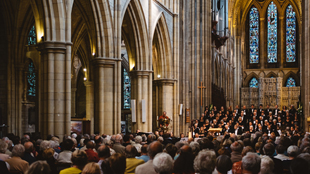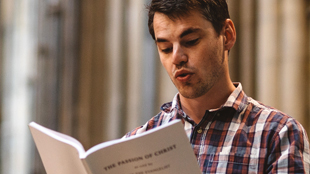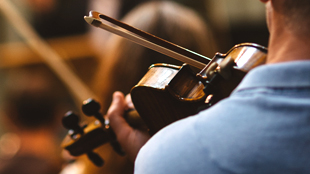Dvorak's Stabat Mater and Schumann's Piano Concerto
Thursday 19th October, 2017
Dvorak's Stabat Mater is a work that is seldom performed but deserves a much wider audience. A powerful large-scale work which uses the words of a 13th Century hymn to the Virgin Mary, its title translates as " Mary Stood": "Keeping her vigil at the foot of the cross, Mary stood, weeping."The music is heart-rendingly beautiful.
Dvorak began writing the work while grieving the death of his baby daughter in 1875. He laid the writing aside for two years, but returned to it when overwhelmed by the terrible loss of his two remaining children. This might sound grim, but after all there are many wonderful and life-affirming works of art that have come from the consideration of suffering. This major piece - it last 90 minutes - uses the usual varied forces of a big cantata. Among our soloists is tenor David Webb, who returns once again to his Cornish fan-base; Anna Patalong (soprano) who has performed at the Royal Opera House and recently sang Mimi in La Boheme in the Rouen Festival (" Patalong sounds utterly gorgeous" - The Guardian 2016); Angharad Lyddon (mezzo-soprano), who has sung for Sir John Eliot Gardiner and recently made her ENO and Glyndebourne debuts; and Benedict Nelson (baritone), another young rising star described by The Times recently as "vocally glorious". Three Spires Singers and Orchestra will as usual be conducted by Christopher Gray.
The concert will open with the brisk and exciting - and rather better known - Insanae et Vanae Curae by Haydn, after which the orchestra will be joined by pianist Paul Comeau for Schumann's ever popular Piano Concerto, especially written for his wife Clara when they were first married. Dating from the happeist period in Schumann's very troubled life ( he was probably schizophrenic), it seems that the work is completely bound up with his relationship with Clara. There is a motto theme, which is an encrypted form of her name in musical notation, and this pervades virtually every bar of the first movement. The second movement is full of delightful interplay between soloist and orchestra; like two lovers, the piano makes an old-fashioned tentative approach; and then, given the slightest encouragement by the orchestra, swoons into giddy love. The rollicking, waltz-like finale is full of joie-de-vivre and almost certainly one of the happiest pieces Schumann ever wrote.



